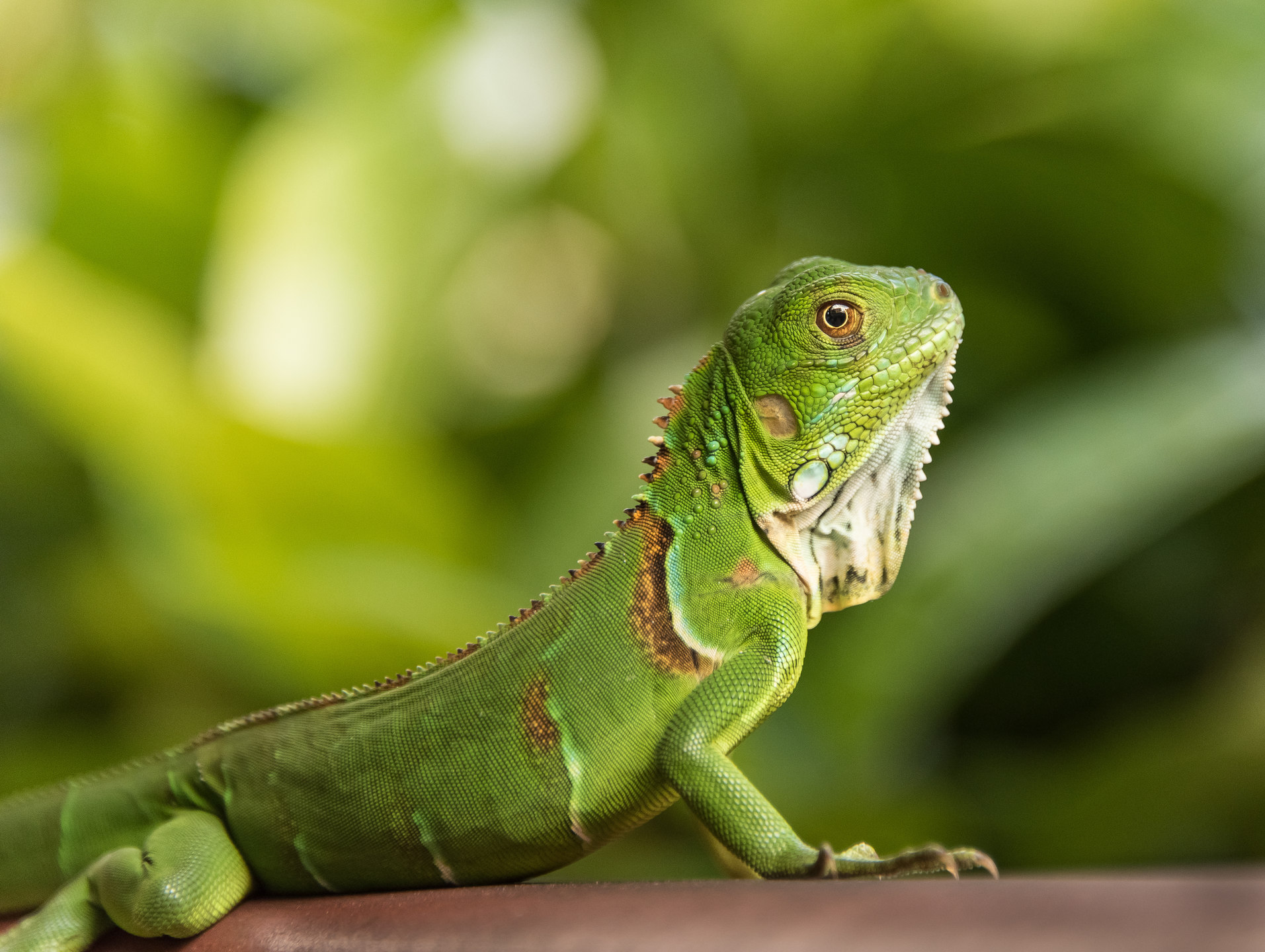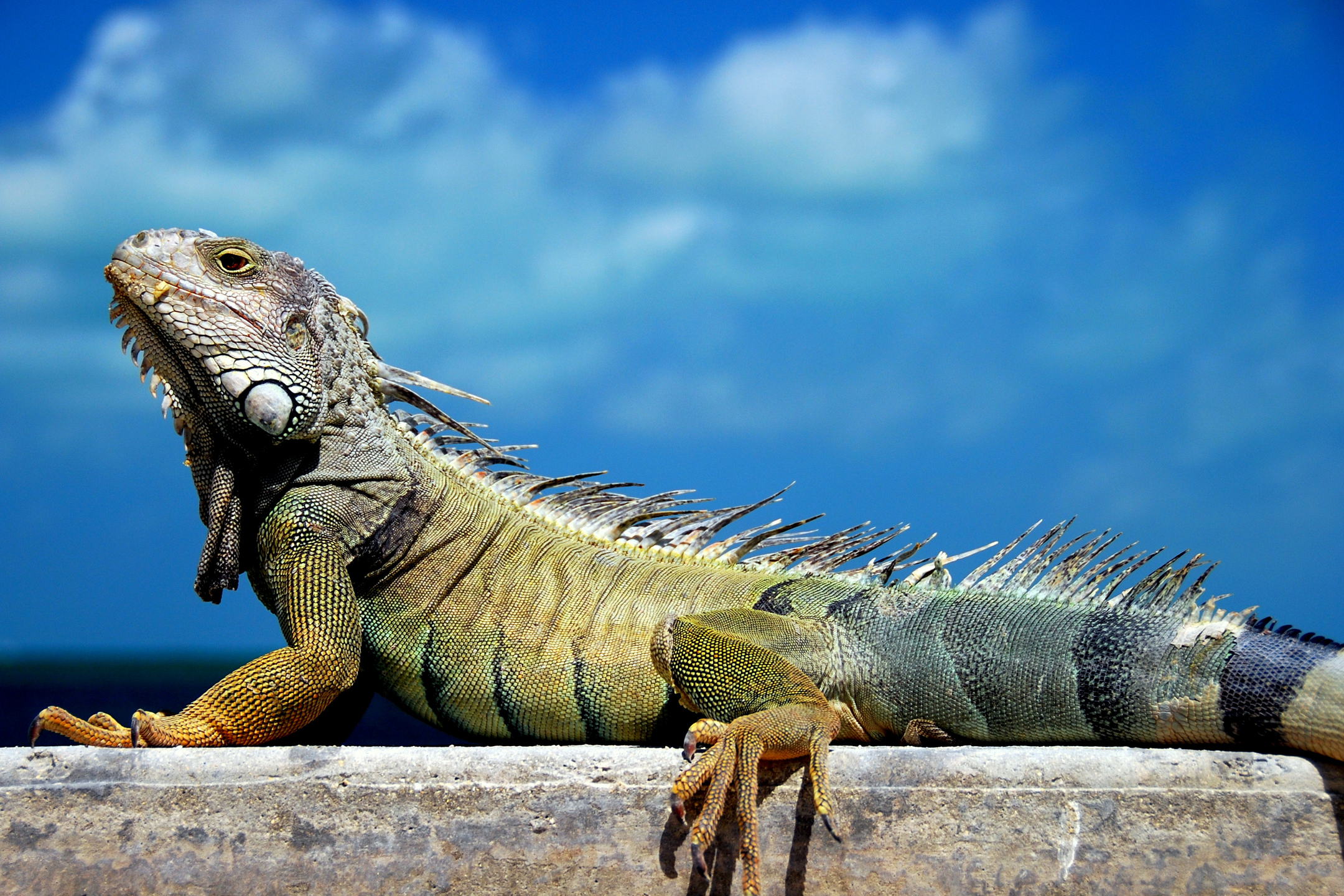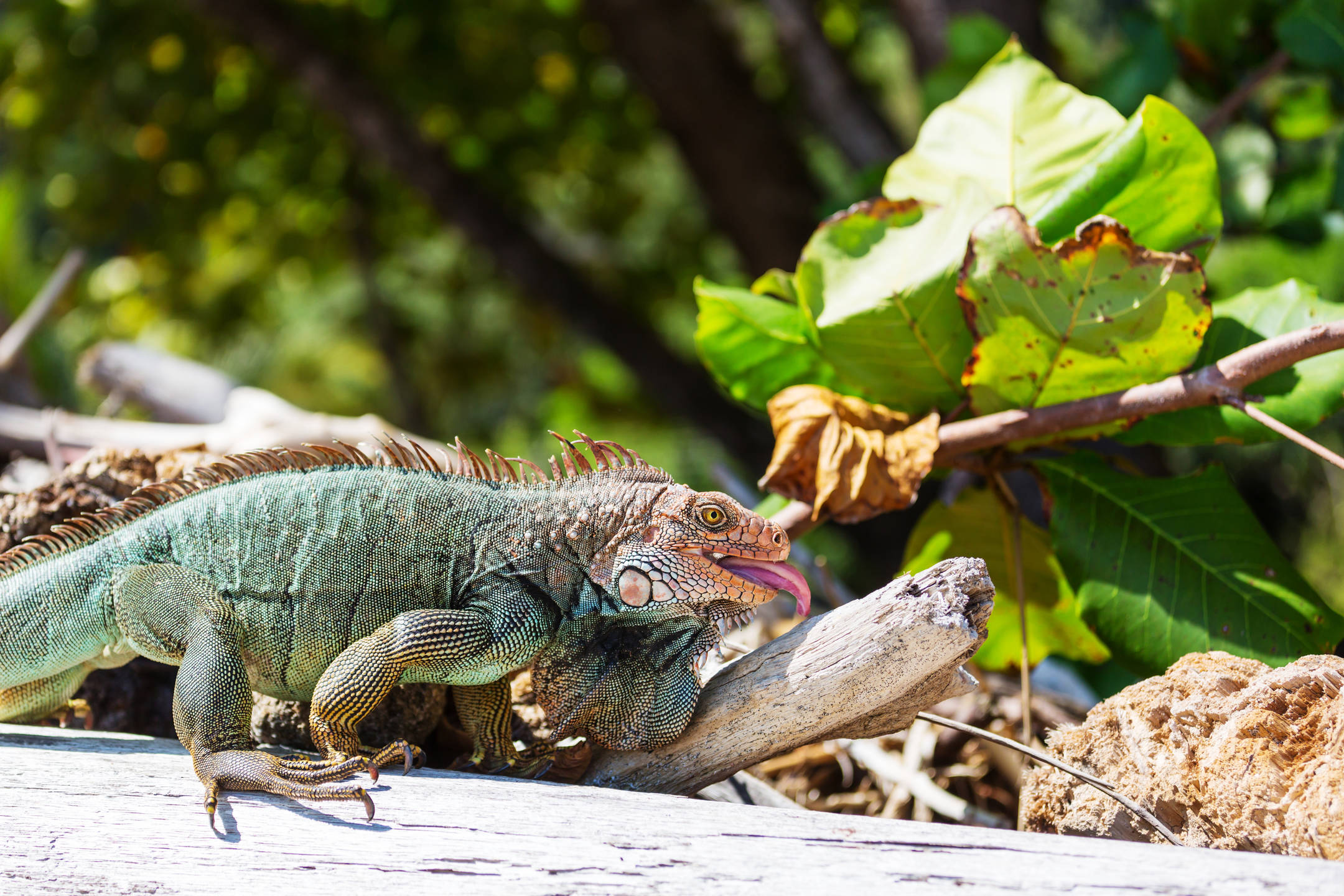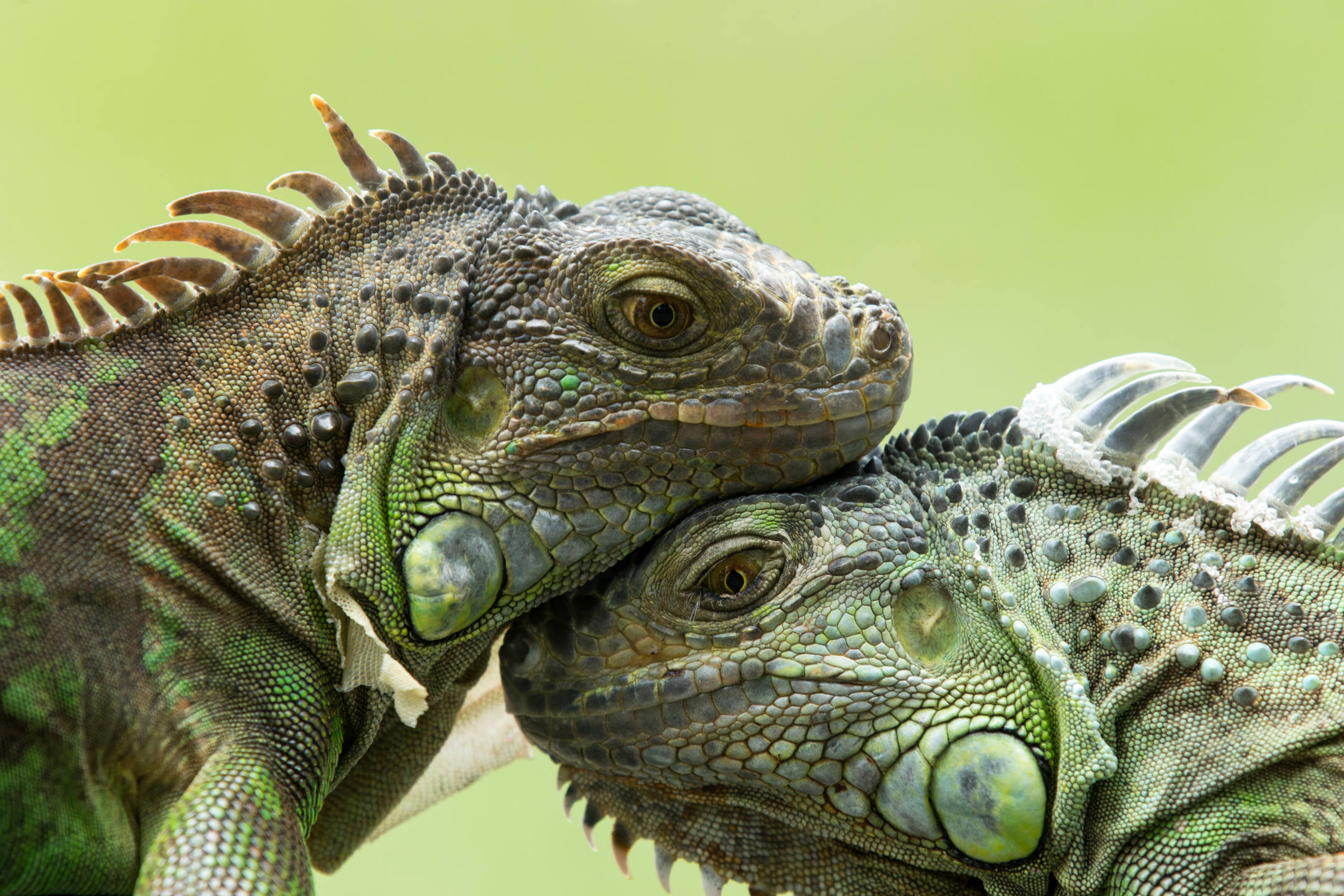Install MyStart Theme for Google Chrome
Commonly kept as house pets, iguanas are the largest type of lizards, native to the Caribbean and Central and South America.
Known for their sharp teeth, their sturdy structure and their saggy skin around their throats and spine, these reptiles not only make great companions, but if cared for properly, they can live for about 20 years as pets.
Here’s everything to know about iguanas.
Size
A few types of iguanas are known to exist, but the green iguana is probably the most common. It is also the longest of the iguanas, usually growing to between 5 and 7 feet long from nose to tail. The smallest type of iguana is called the spiny-tailed iguana, which grows to 4.9 to 39 inches long. The heaviest iguana is the blue iguana, and can weigh up to 30 lbs. More than half of the body length of these very large lizards is due to their tail. When thinking of having an iguana, a very large tank or enclosure is thus to be considered, so this reptile can stretch out and turn around.

Habitat
Because they are cold-blooded, iguanas like warm temperatures; usually, outside temperature is what keeps them warm since they cannot regulate internal heat with their own bodies. This is why iguanas are ectotherms, meaning their body temperatures are determined by their environmental temperatures. These lizards are found in Mexico, Central and South America, the Galápagos Islands, on some of the Caribbean islands, Fiji and Madagascar. When kept as pets, iguanas should be kept in a basking zone with a temperature of around 90 degrees Fahrenheit, provided with a cooler zone that shouldn’t fall below the mid-70s.

Diet
Most iguanas are herbivores and only eat vegetation such as flower buds, fruits and young leaves. There are some exceptions, like the marine iguana, who gets its meal by scraping algae from rocks in the ocean or by munching on seaweed. Pet iguanas and some wild iguanas will also enjoy worms, crickets and baby mice along with vegetation.

Temperament
Iguanas are very social and like to eat and live together. However, male iguanas are known to be territorial and fight other male iguanas when they feel invaded. Since they don’t need to actively hunt for their food, iguanas are quite laid back, and typically spend their days lounging in the sun to keep warm. They will mostly be active to get some food from time to time. Iguanas have excellent vision and can see long distances, shapes, shadows, color and movement. In the wild, iguanas use their eyes to navigate through trees and forests, and for finding food. They also use their eyes to communicate with each other.

Fun Facts
Iguanas can be great swimmers. While most are content to lounge on dry land or cling to shady tree limbs, the marine iguana of the Galapagos Islands spends a great deal of time under the sea. Even though this type of iguana still requires warmth to survive, thanks to its dark coloration, the marine iguana has no trouble soaking up the sun’s rays.
Iguanas also have a third eye called the parietal eye, which is used to alert them of aerial threats. Unlike the other two eyes, this third eye can only detect changes in lightness and darkness, which is still more than enough to evade predators.

Want to know more about iguanas? Don’t forget to download our extension Iguana for additional facts and pictures.
Install MyStart Theme for Google Chrome










